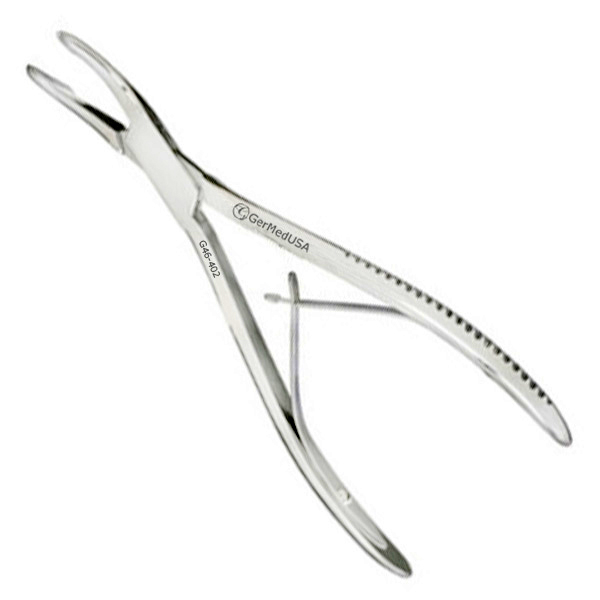Going to a podiatrist is sometimes scary, just like going to the dentist. Most probably, it is due to the tools that they use. Podiatrists perform different podiatric procedures to diagnose and treat foot and lower limb disorders. For this, they use various instruments to carry out podiatry procedures efficiently.
The emerging innovations in podiatry have resulted in the manufacturing of various podiatry tools. Different instruments are specific to particular podiatry procedures. So, their shapes, sizes, and features vary depending on how they perform their functions.
In this blog, we will learn about the most common tools for podiatry procedures. Let's start our discussion!
Most Common Podiatry Instruments
The following are the most commonly used instruments for podiatry procedures.
1. Knife Instruments
Knife instruments are helpful during podiatry and many other surgical procedures. They assist surgeons in treating foot and other lower limb issues. For this purpose, they have extremely sharp blades. Their handles are easy to grip and help to reduce strain on surgeons' hands.
Some most of these podiatry tools include
- Nucleus Knife
- Soft Corn Spoon Knife
- Cartilage Knife
All these knife instruments have ergonomic designs and are easy to use. Besides, they are made of high-quality German stainless steel. So they are easily autoclavable and reusable.
2. Packer And Excavator
A packer and excavator help surgeons remove carious dentin. It features a packer on one end and an excavator on the other end. So, the bone packer condenses the bone during bone grafting procedures.
While the excavator is used for removing the carious dentin from the decayed tooth. These surgical instruments are an essential part of the podiatry toolkit.
3. Podiatry Bone Rongeurs
Podiatrists use Bone Rongeurs to gouge or pick out the bones during podiatry procedures. Some of them feature hollow jaws to extract and trap the bone. While others have a concave scoop or cup-shaped jaws. The most common podiatry
Bone Rongeurs include
- Bone Rongeur
- Bone Spreader
- Friedman Dental Rongeur
These podiatry instruments are ideal for podiatry procedures. All these have double action mechanisms for easy opening and closing of jaws. Their handles are also easy to grip and prevent instrument slippage. They are also easy to maintain and have high tensile strength.
4. Probe and Packer
Probe and packer is a double-ended tool. Podiatrists use it to probe abscessed sinus tracts and insert or clean under the nail. So, it is a vital part of the podiatry toolkit.
The instrument is easy to use and features a non-slip handle. Its handle provides maximum control over the tool. Thus, reducing fatigue on surgeons' hands.
5. Podiatry Chisels
Podiatry Chisels are used to extract or realign the bone and nails. So they help surgeons during various podiatry procedures. They also assist in making clean and rapid bone cuts. Besides, they keep the nearby tissues intact.
The most commonly used podiatry chisels include:
- Podiatry Chisel
- Hand Chisel
These podiatry surgical instruments assist in cutting and reshaping bones during various surgeries. They are also easy to maintain and are reusable.
6. Podiatry Scissors
Podiatry scissors assist orthopedists during foot and ankle surgeries. Podiatrists use them to cut wires and treat ingrown nails. They are of different types, which are as follows:
- Cuticle Scissors
- Nail Scissors
- Crown and
- Collar Scissors
- Moleskin and Felt Scissors
All these scissors vary in their features and sizes. They also perform different functions, and surgeons use them depending on their needs.
7. Tissue and Cuticle Nippers
Podiatrists use tissue and cuticle nippers to remove soft tissues, especially cuticles. They are also to separate cuticles from nail edges or nail beds. They usually feature concave and curved blades for easy access to the nail borders.
Additionally, their self-opening handles provide a secure grip for cutting cuticles. They are also reusable after proper sterilization.
8. Sesamoidectomy Clamp
A sesamoidectomy clamp is an ideal tool for podiatric and orthopedic procedures. Orthopedists use this tool to separate the sesame bone from the toe base. The finger ring handles are easy to hold. Thus, they reduce finger strains on surgeons' hands.
The long shanks also facilitate surgeons' easy access to the surgical site. Additionally, the curved ends ensure atraumatic podiatric procedures. So it doesn't cause any damage to the surrounding tissue.
Are You Looking for High-Quality Tools?
The quality of the podiatry tools matters most for successful surgeries. A podiatrist can only provide maximum care with top-notch instruments. If you are also a podiatrist who wants high-quality instruments for podiatry procedures, you may consider GerMedUSA.
They have been manufacturing and supplying tools for the last three decades. Most of their tools are made of German stainless steel. So they are rust and corrosion-proof. They are also inert to many chemical reactions.
Their tools also require low maintenance when used properly. You can also order them to customize podiatry instruments to meet your surgical needs.
FAQs
What types of tools do surgeons use to cut ingrown nails?
Podiatrists use toenails or nail nippers for cutting and treating ingrown nails.
Do podiatrists use scissors and knives?
Yes, podiatrists use podiatry scissors and knives for treating foot and other lower limb diseases. Yet they are different from other surgical scissors.


Post a Comment